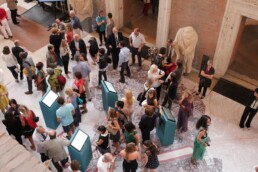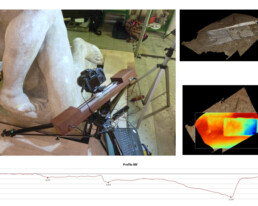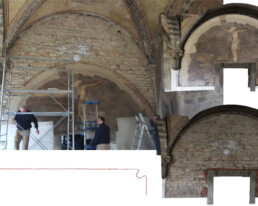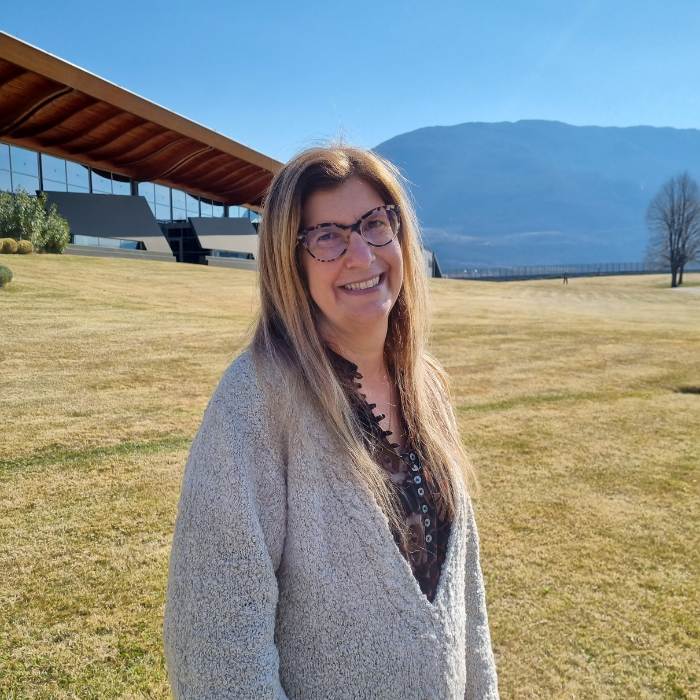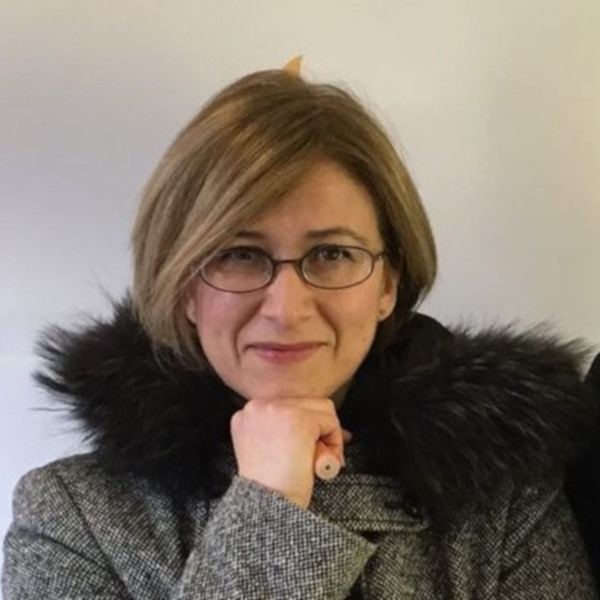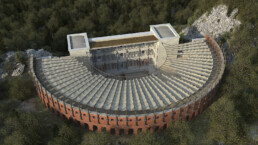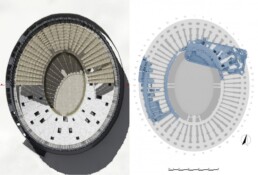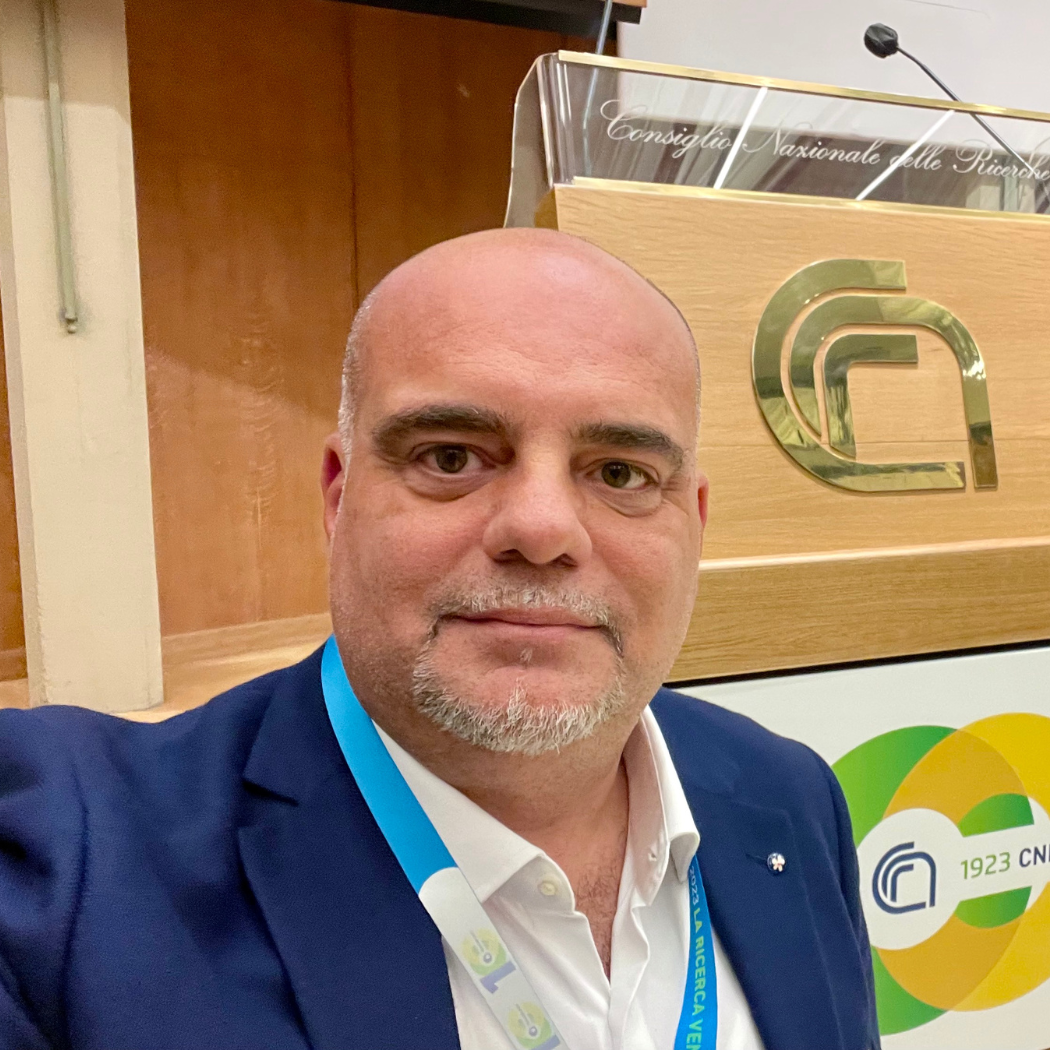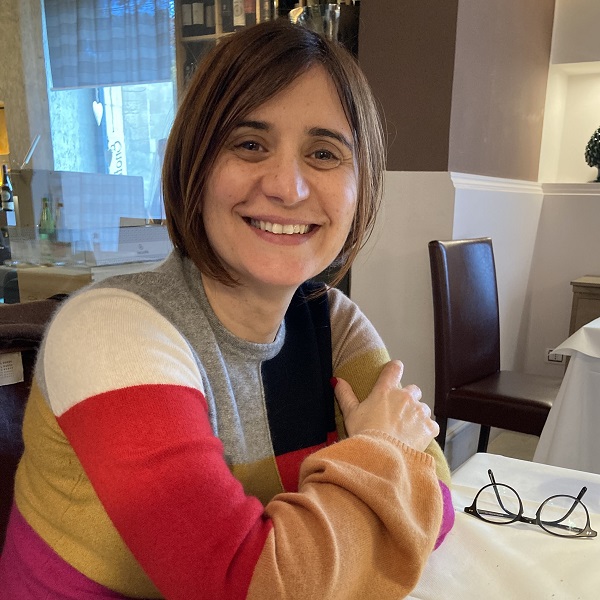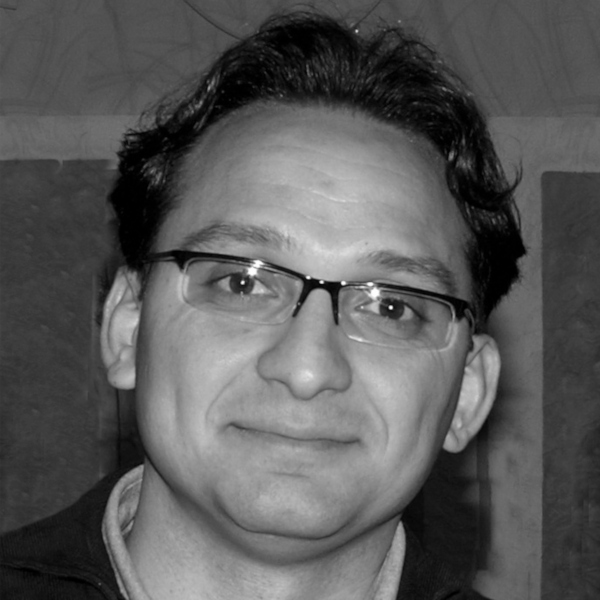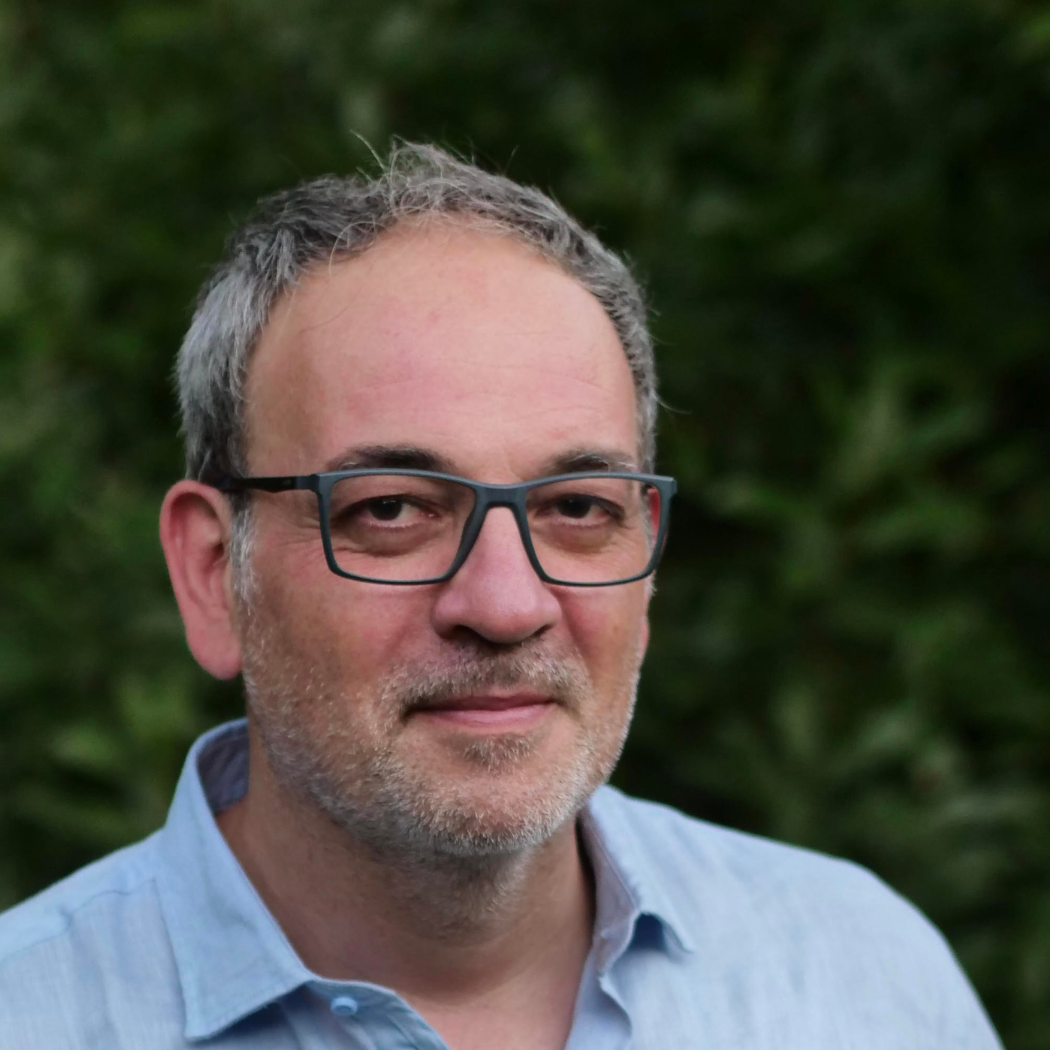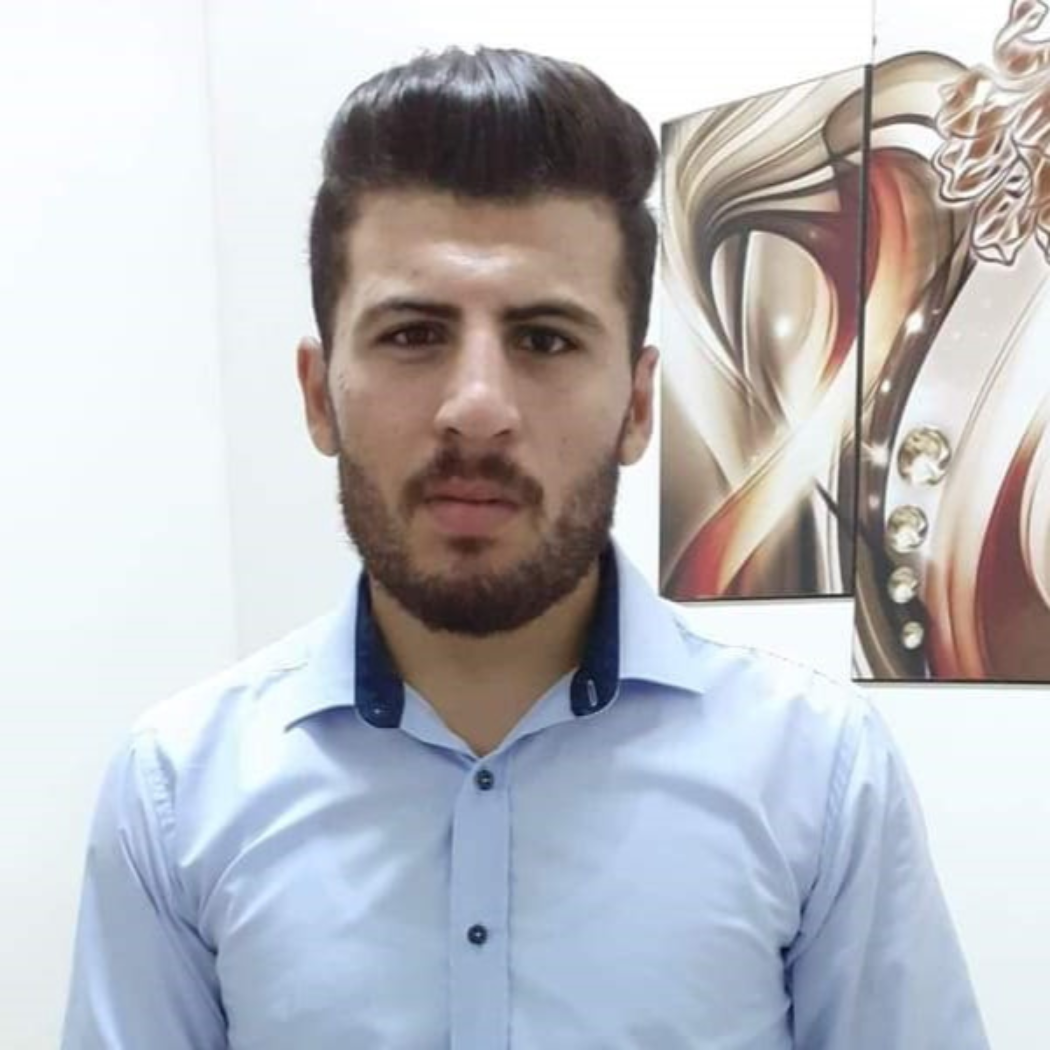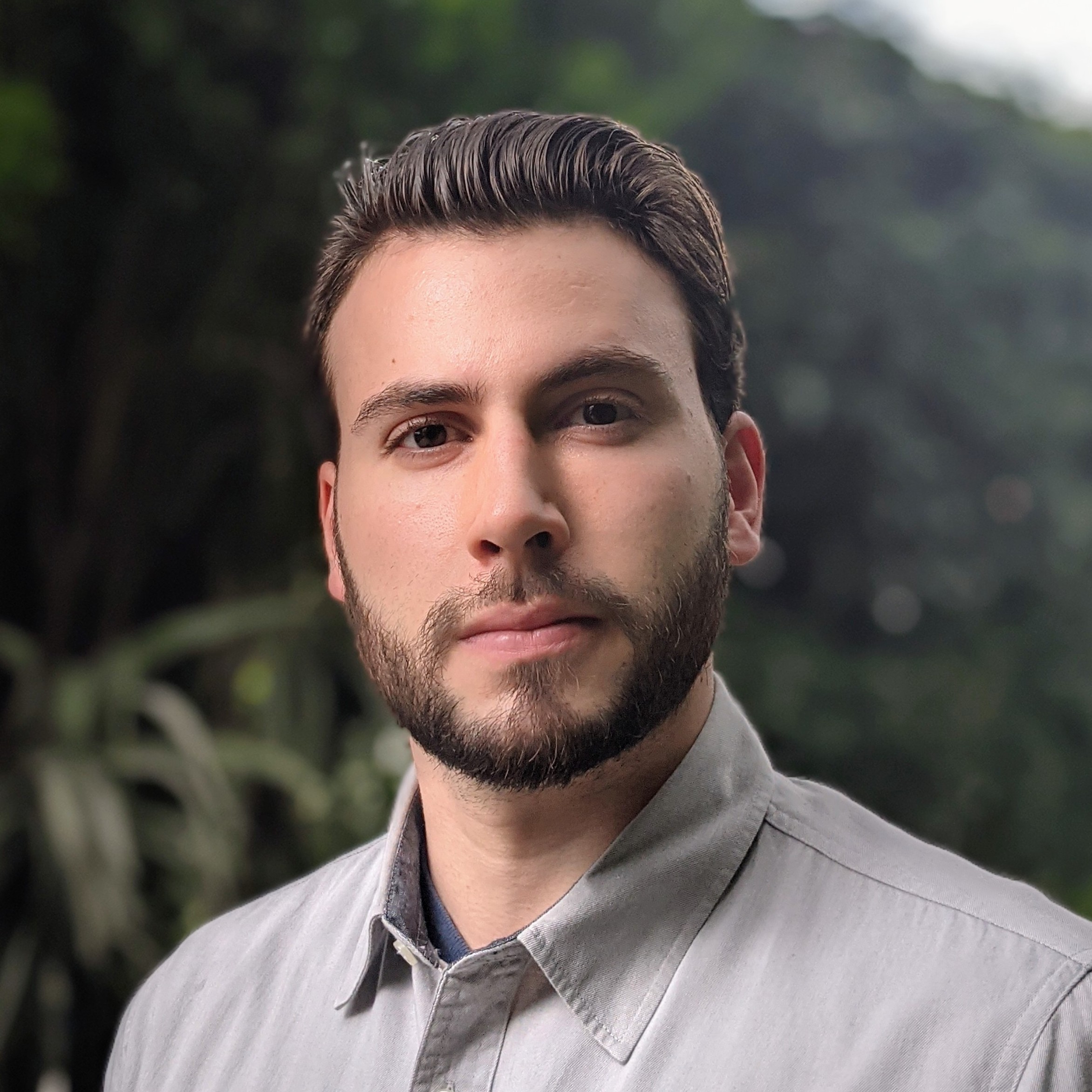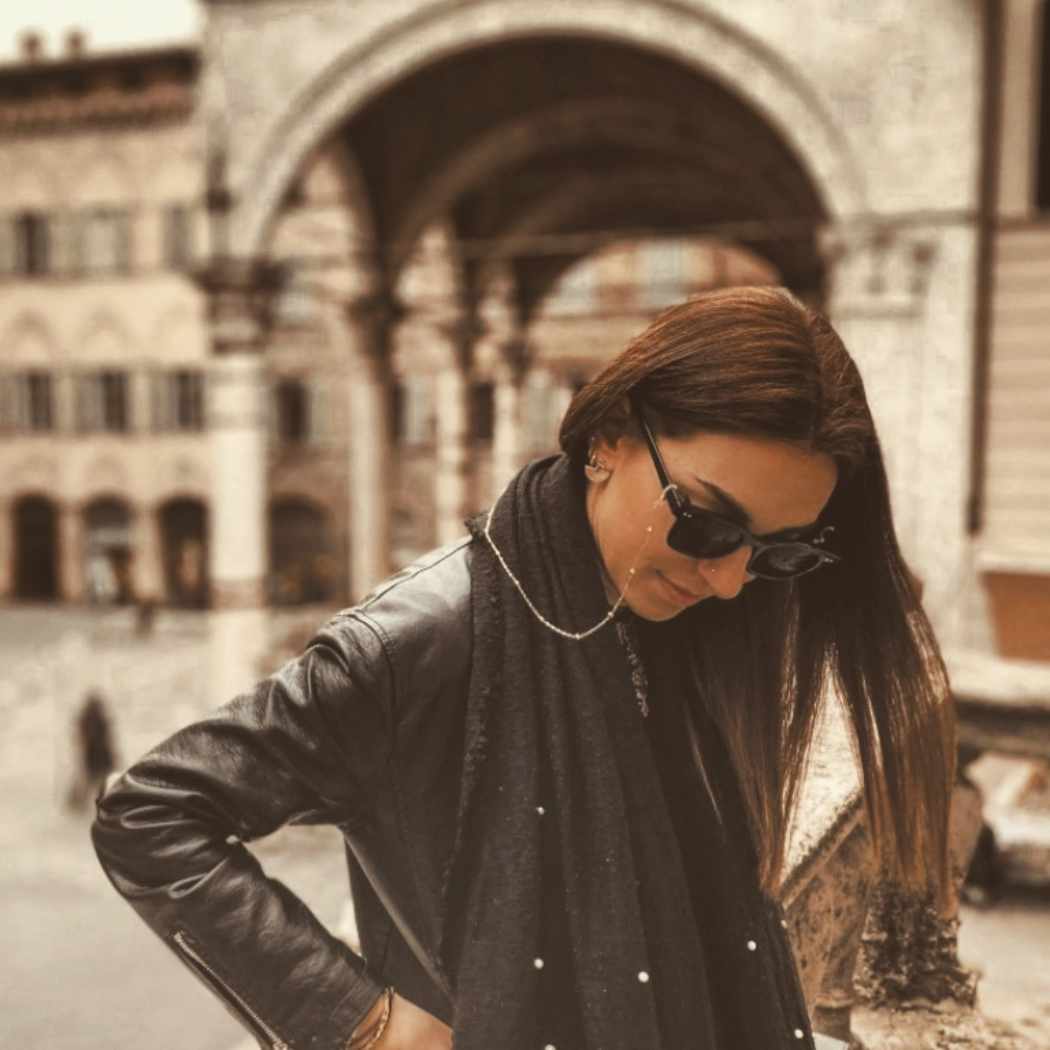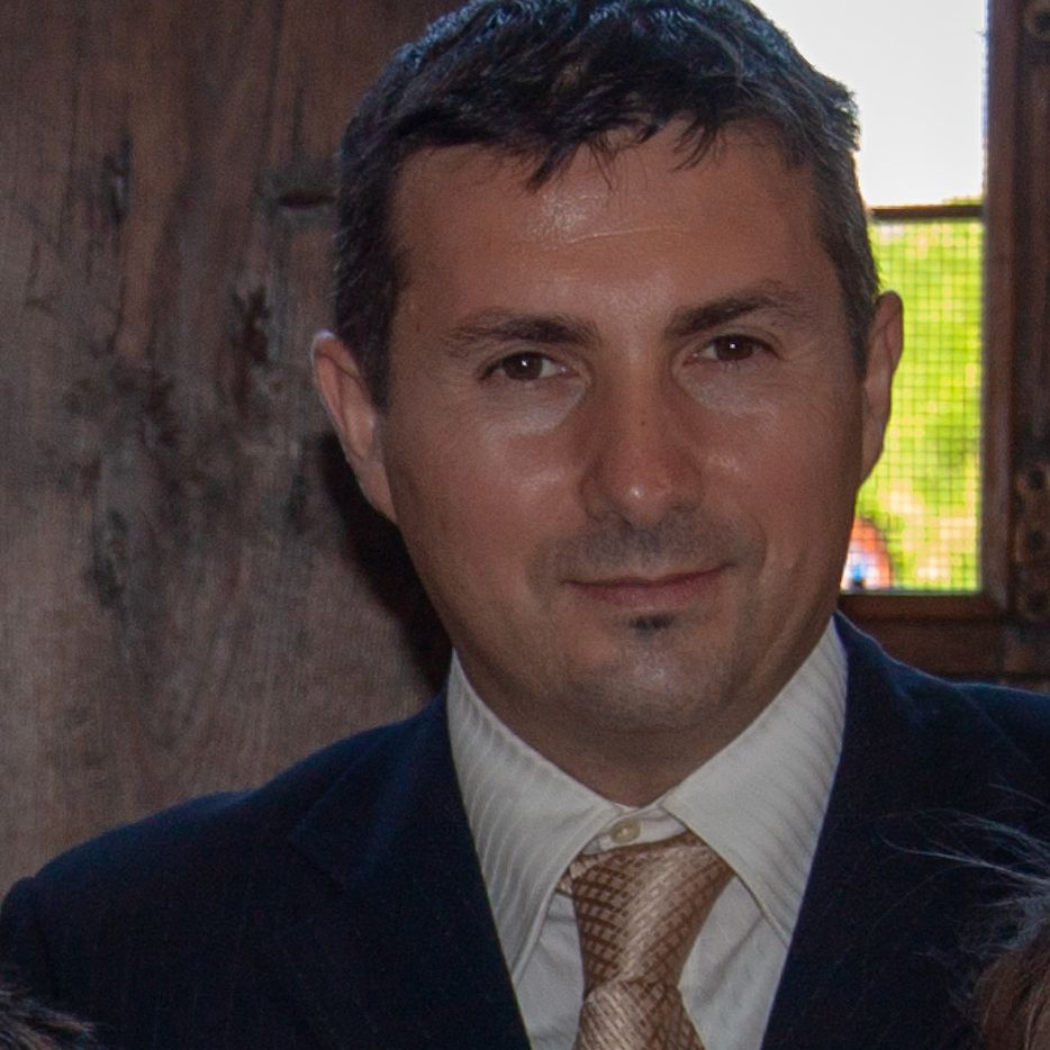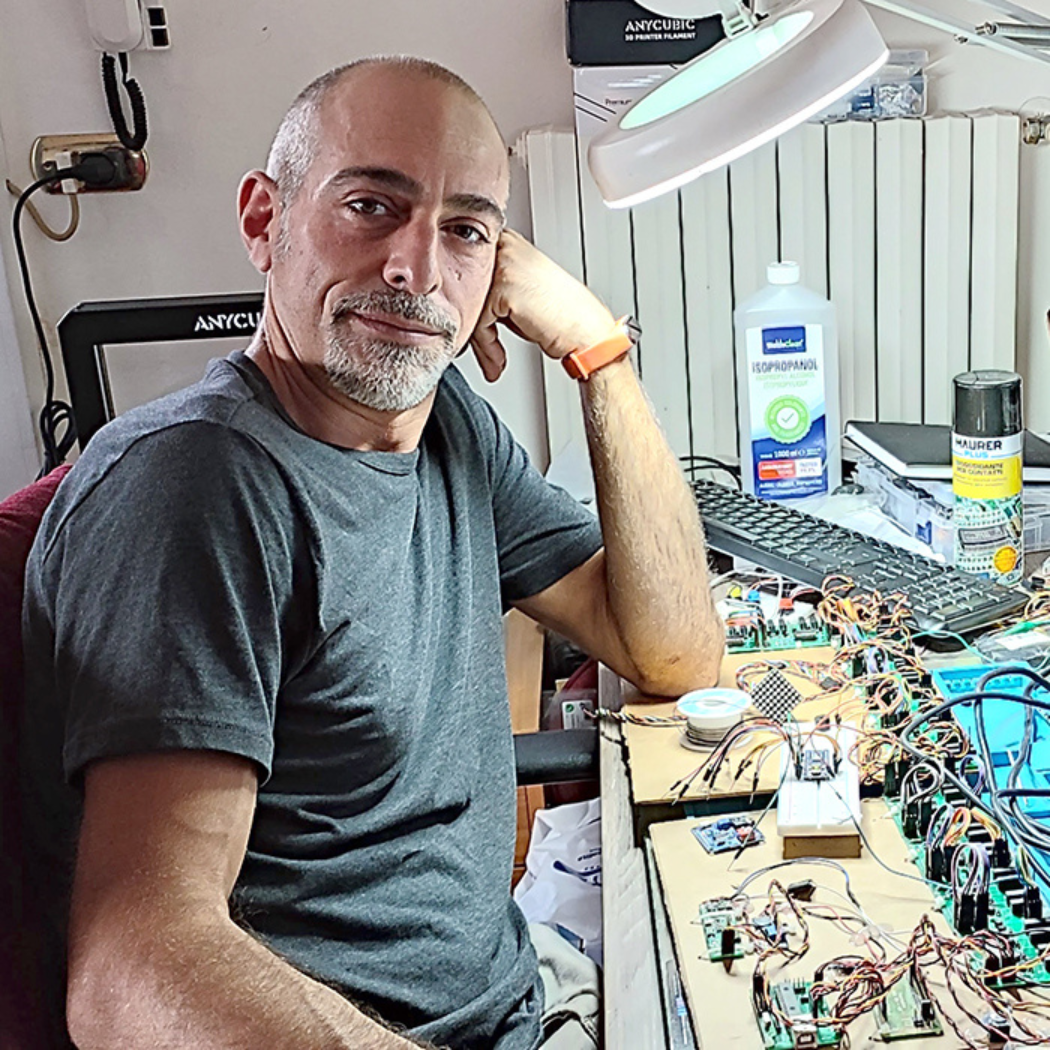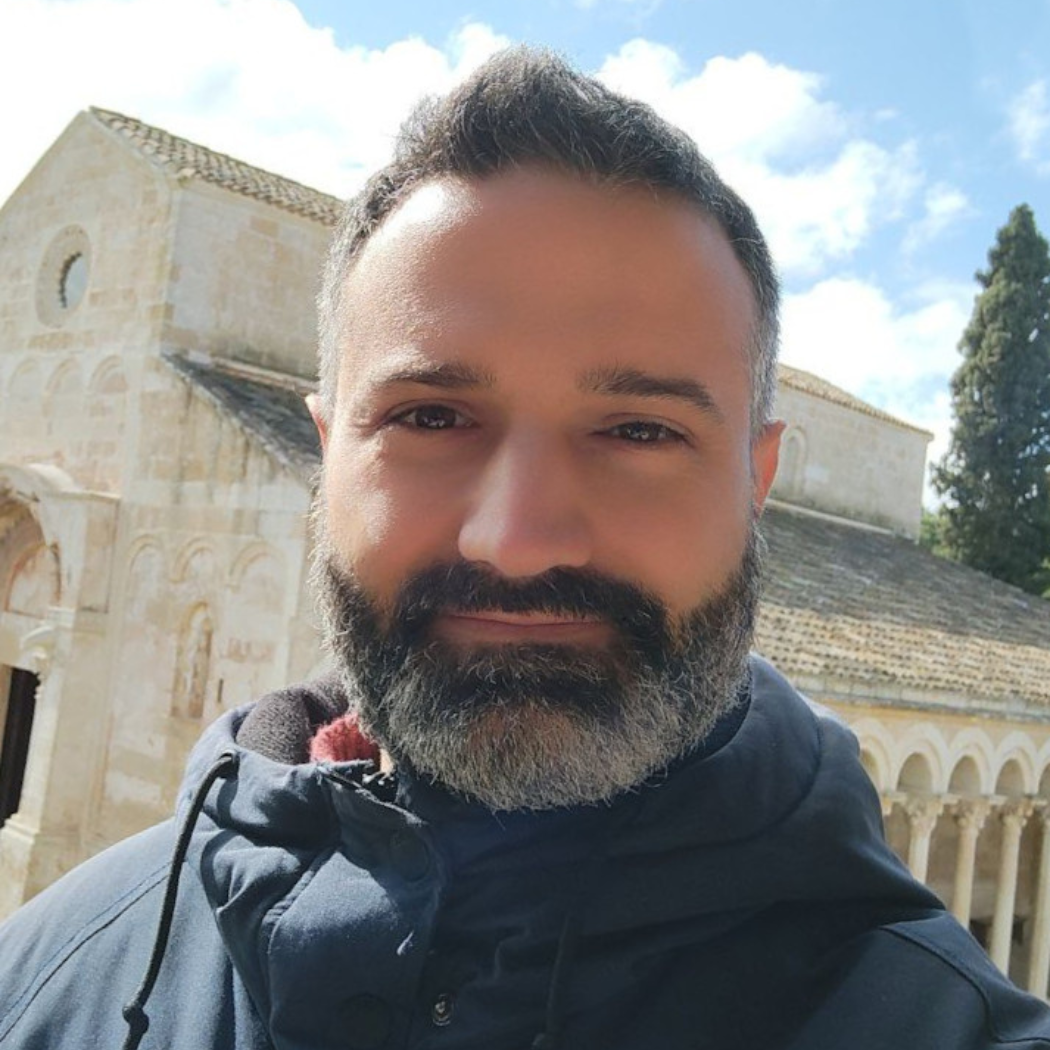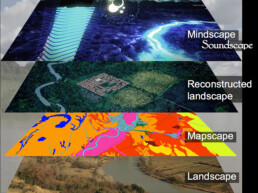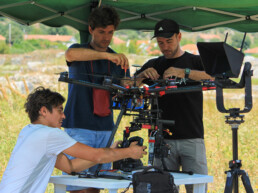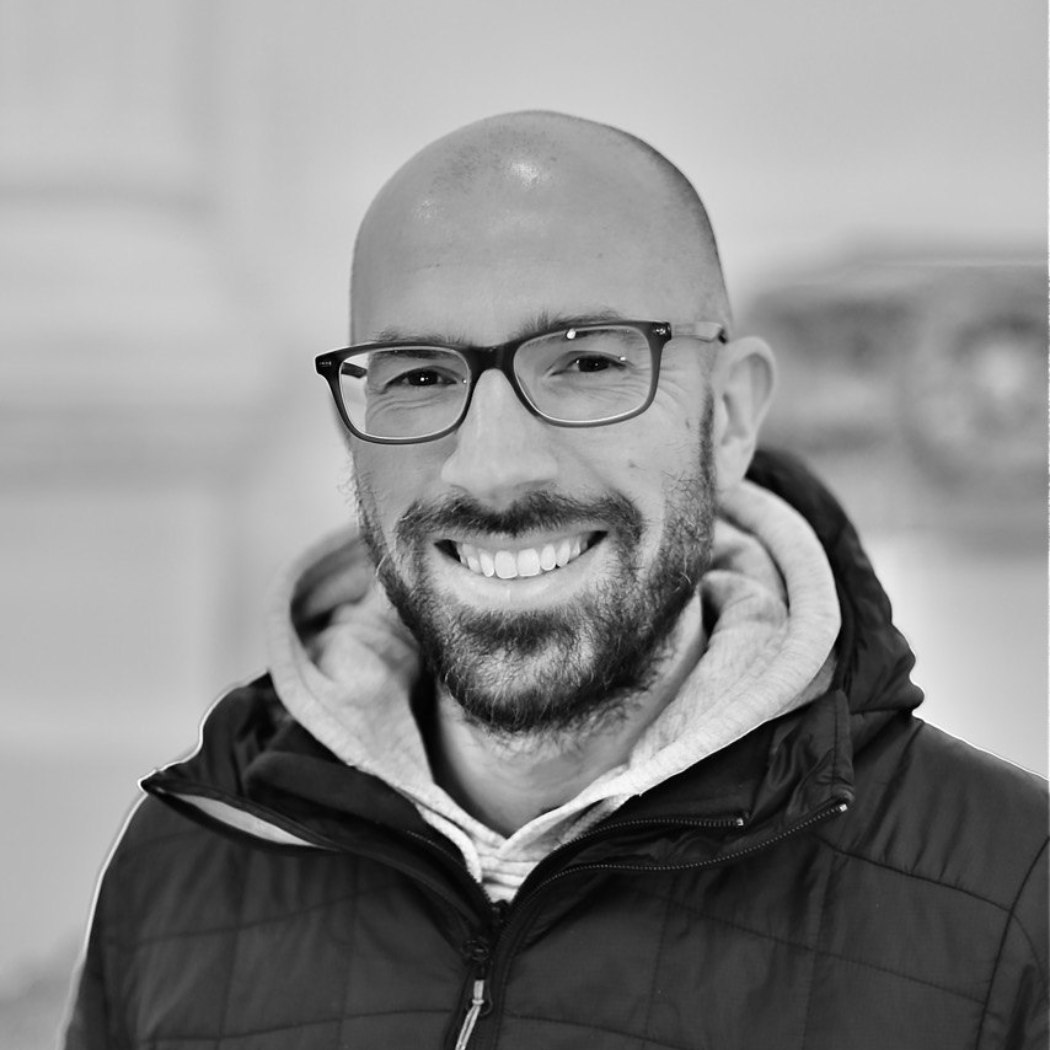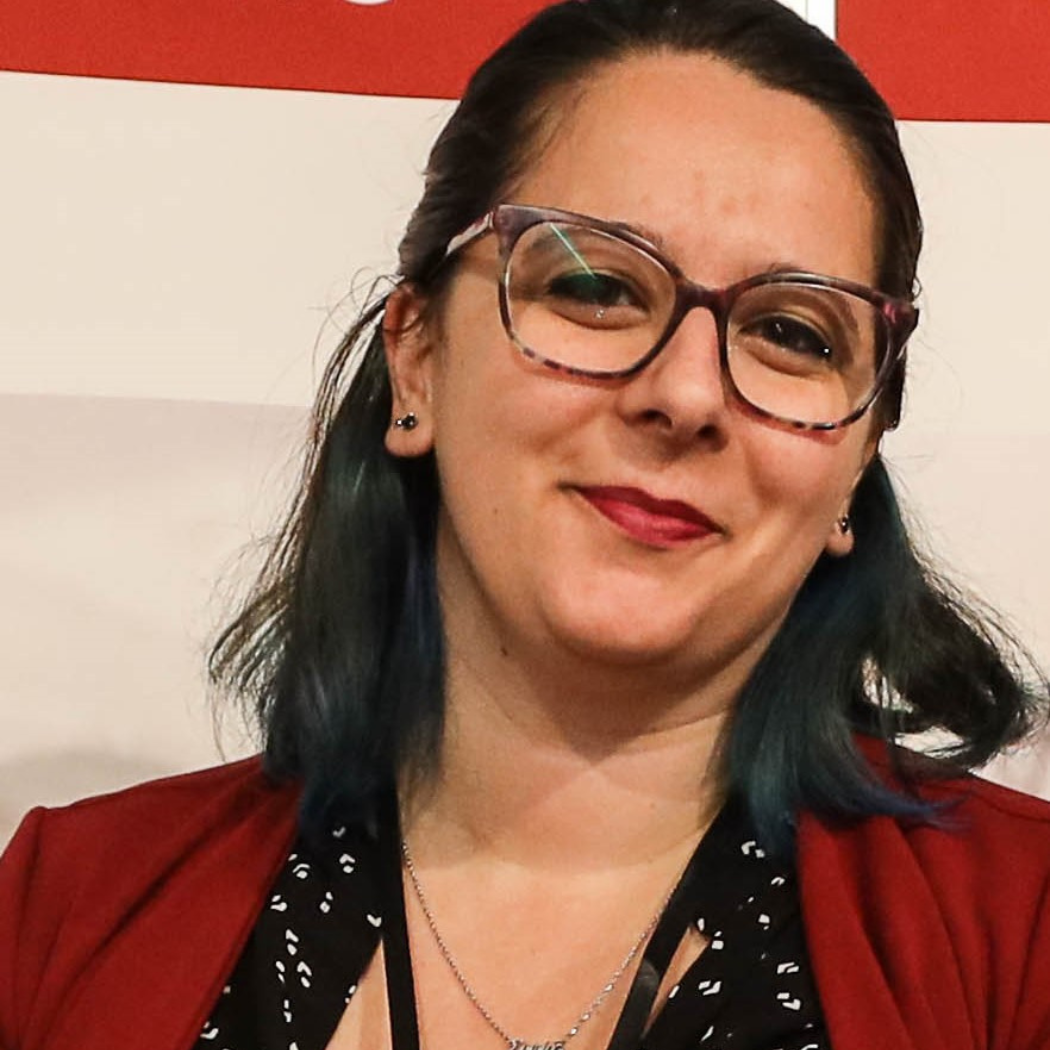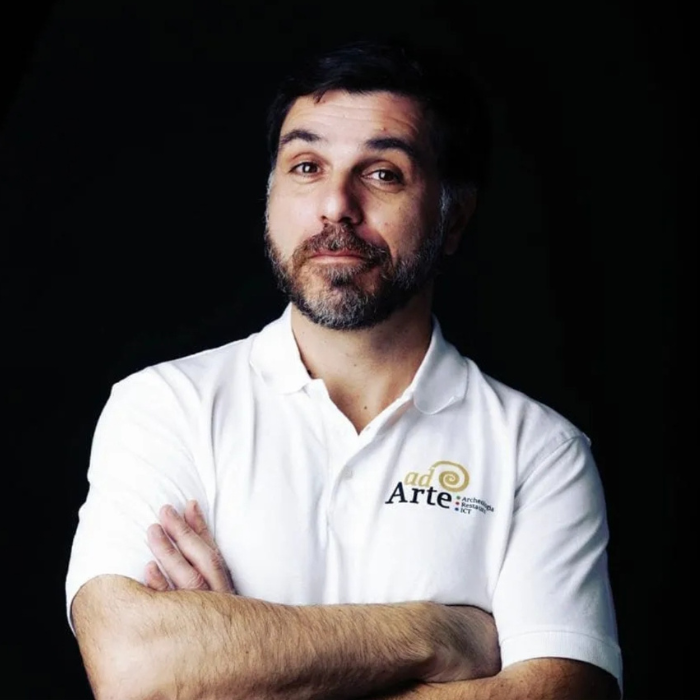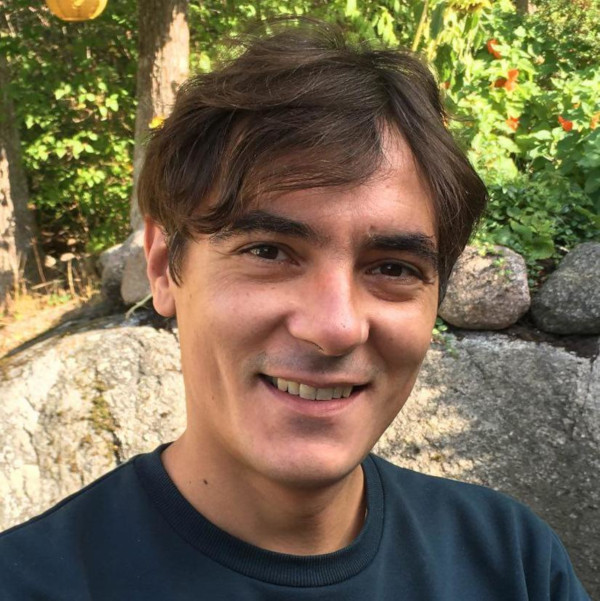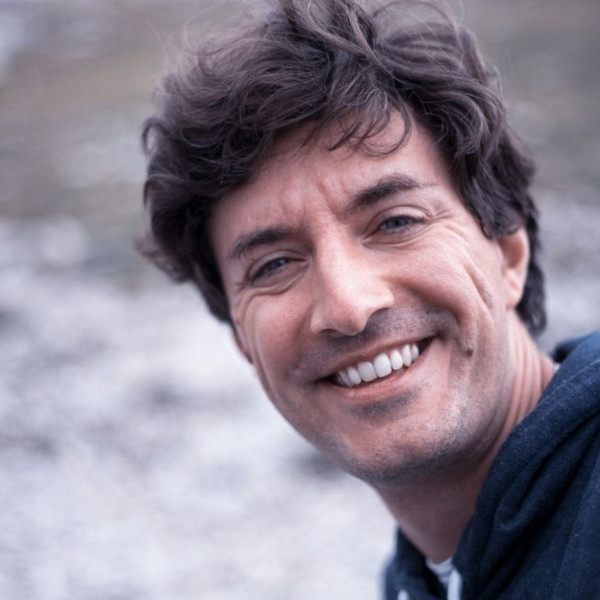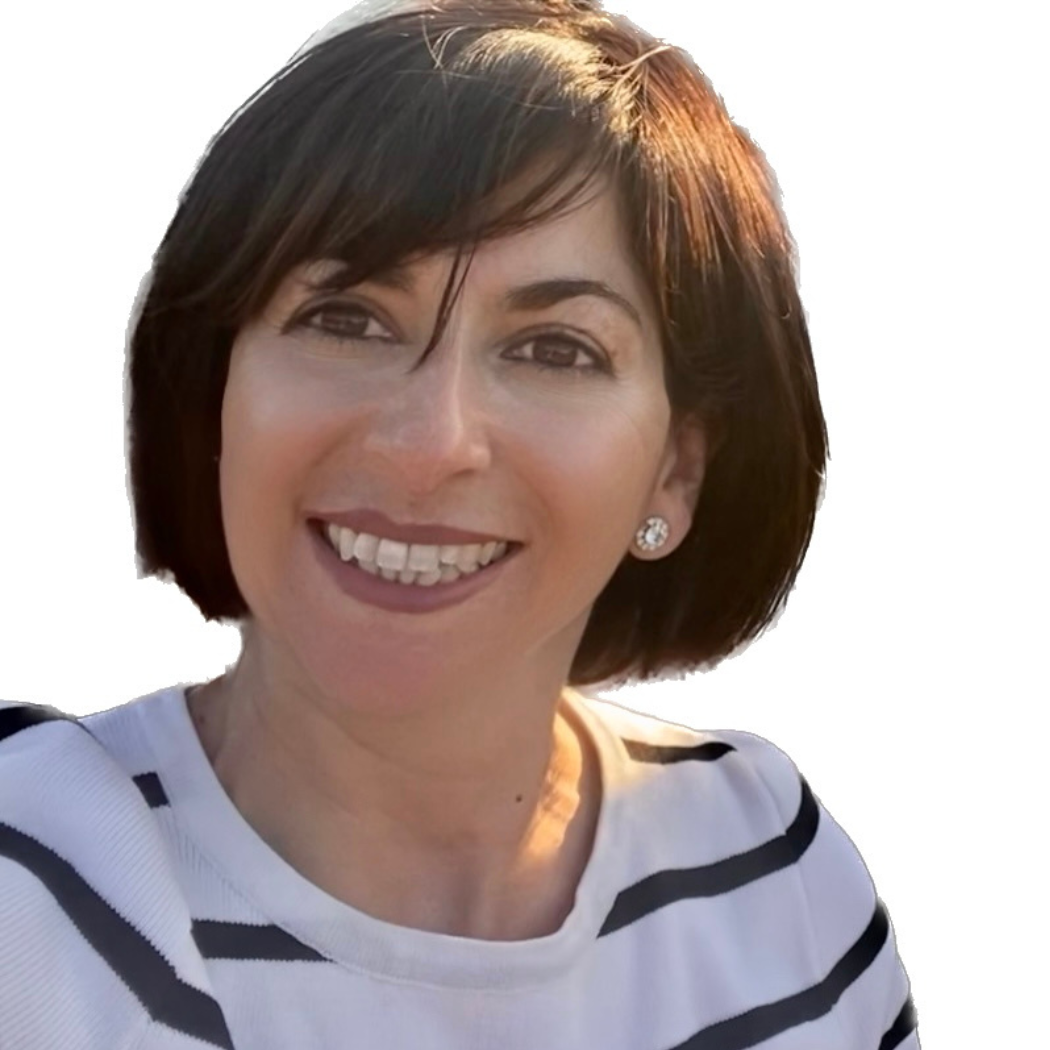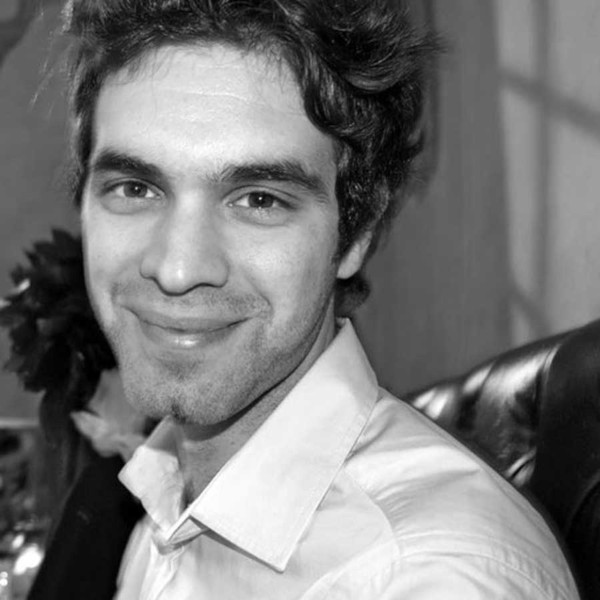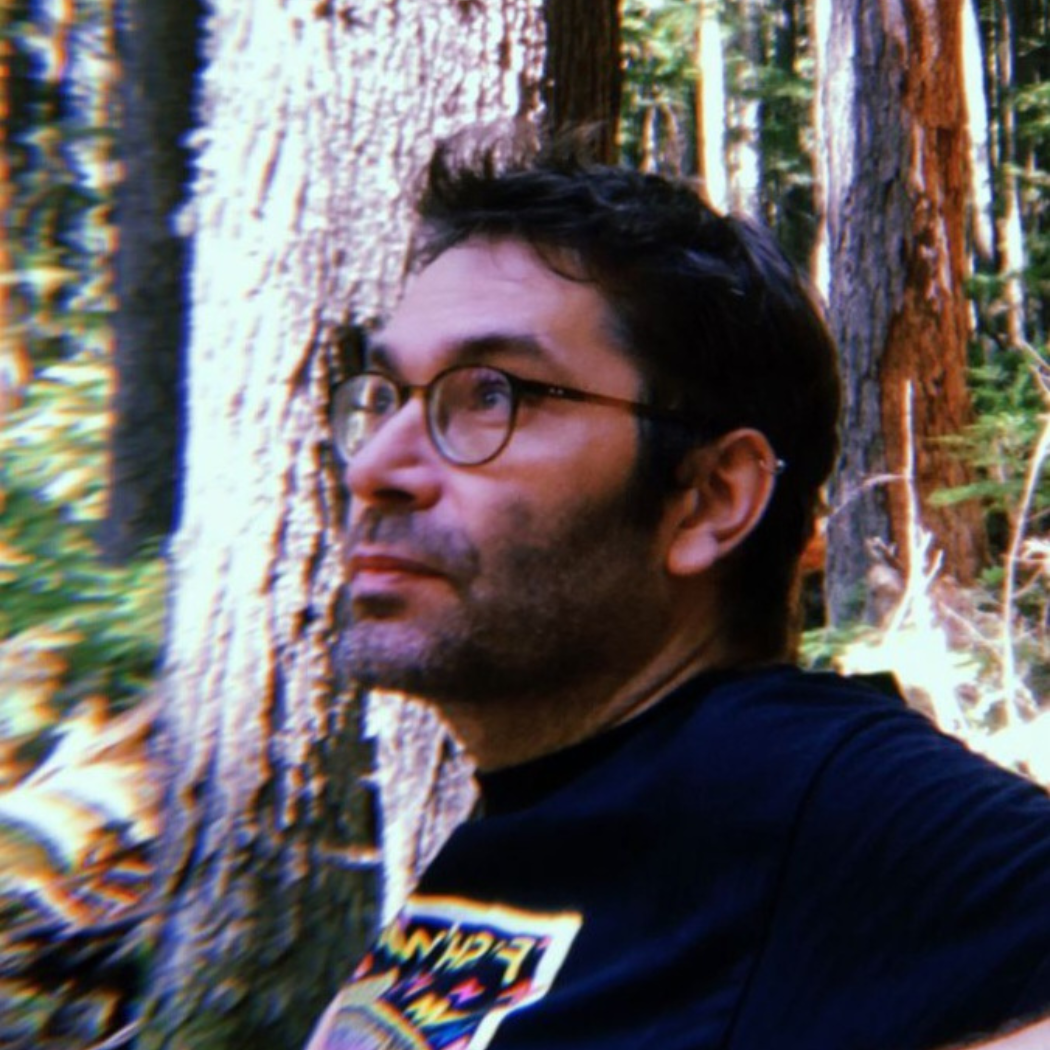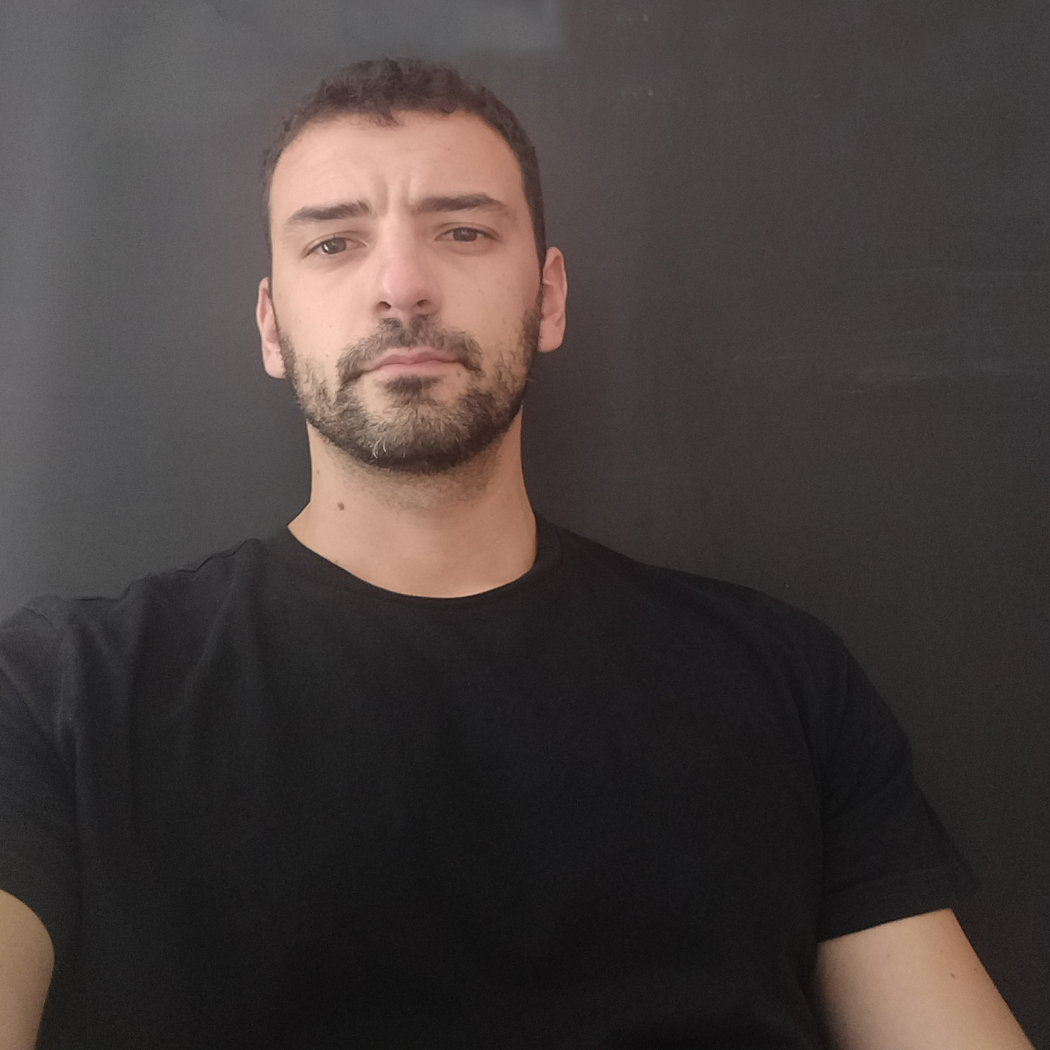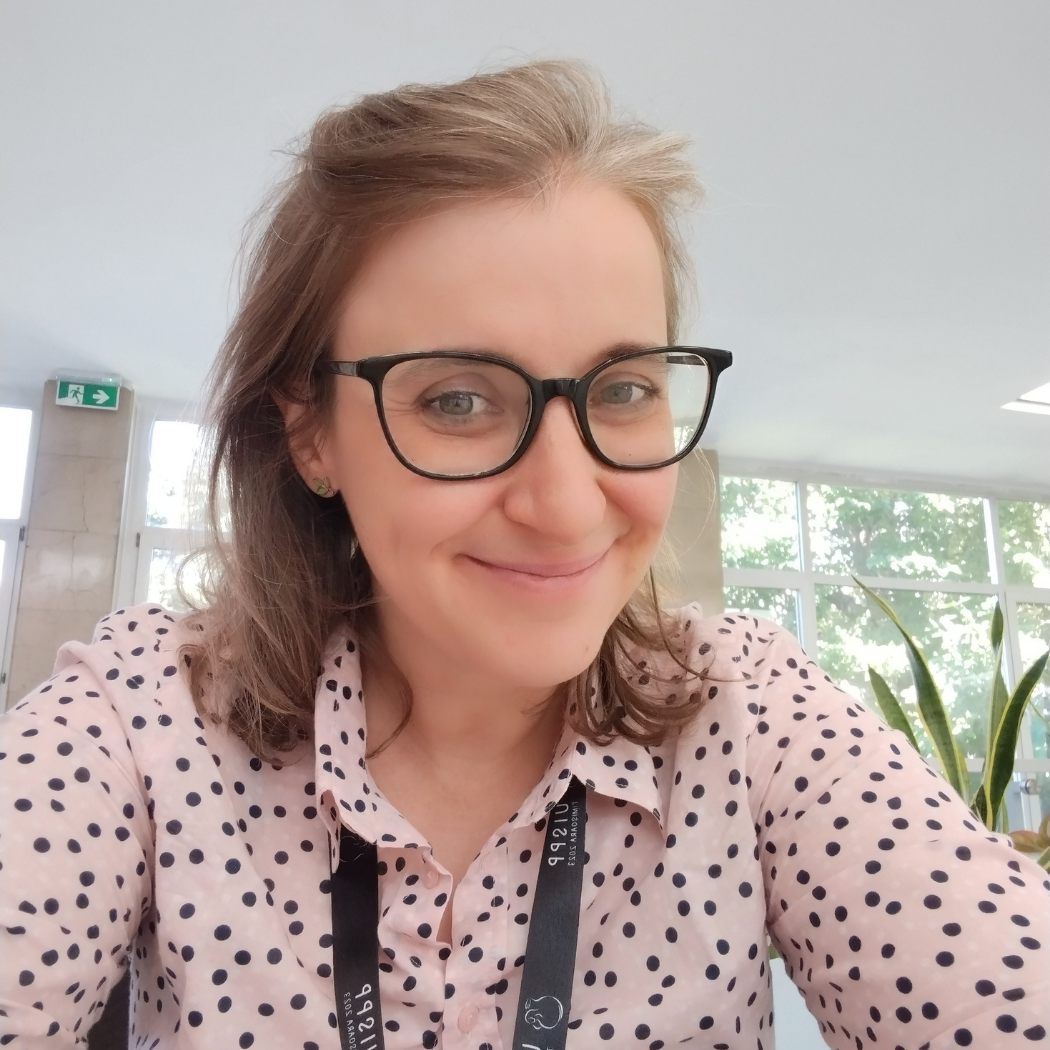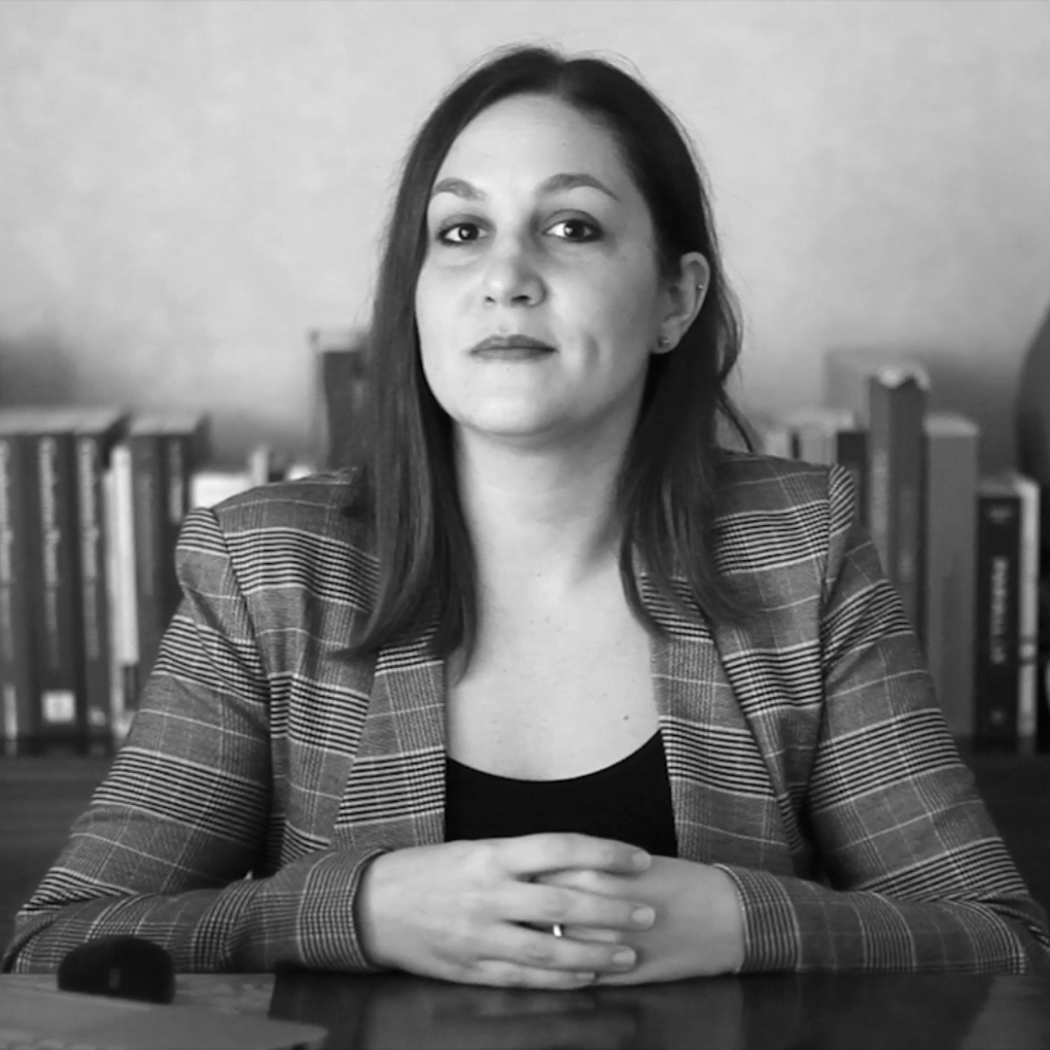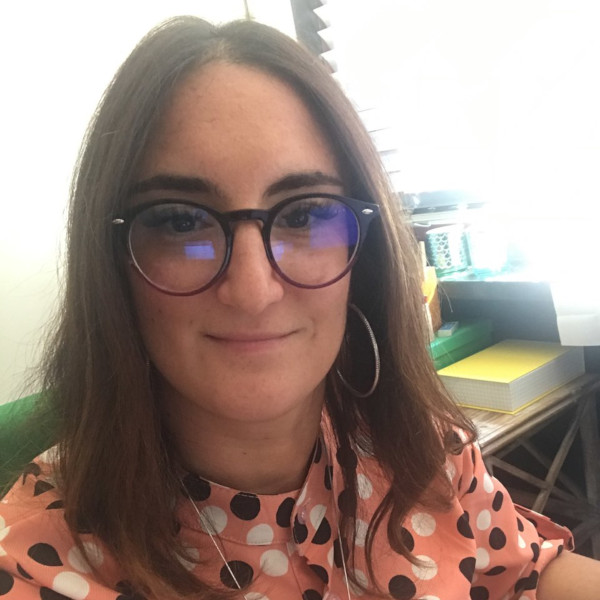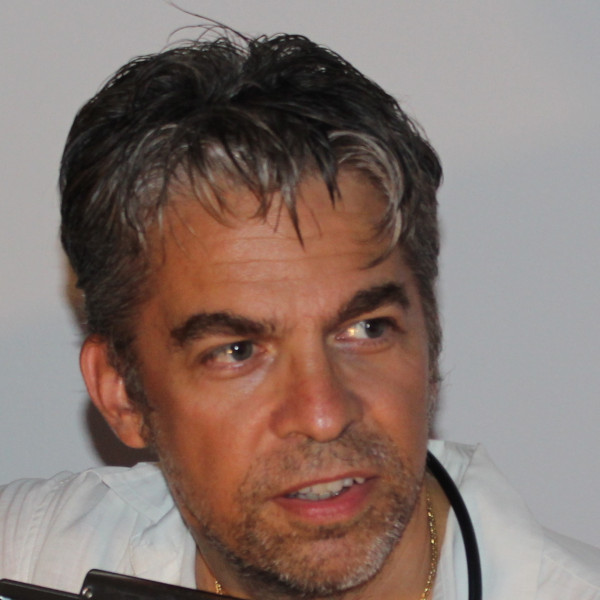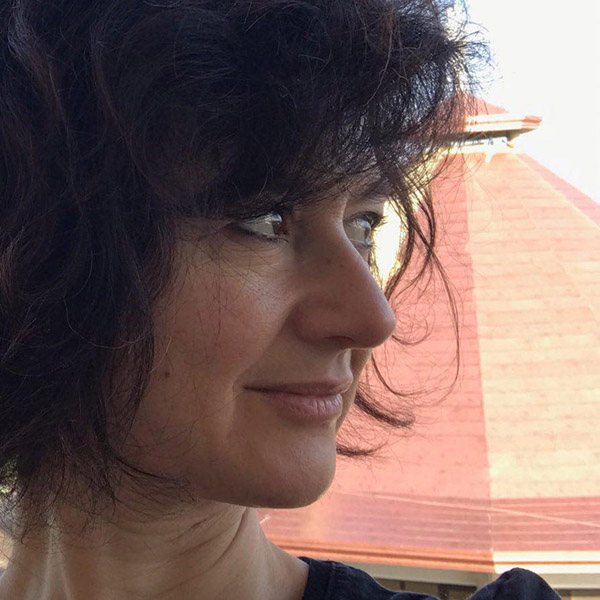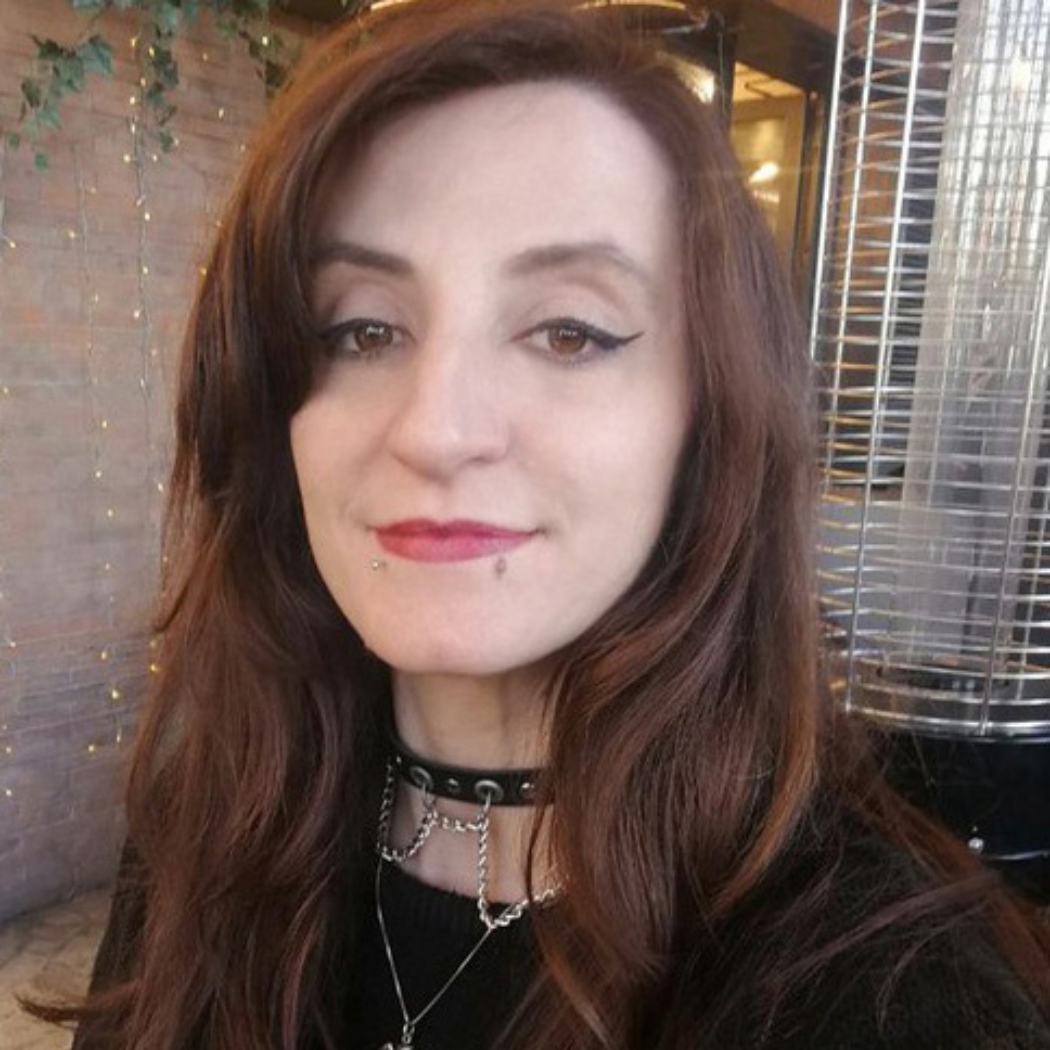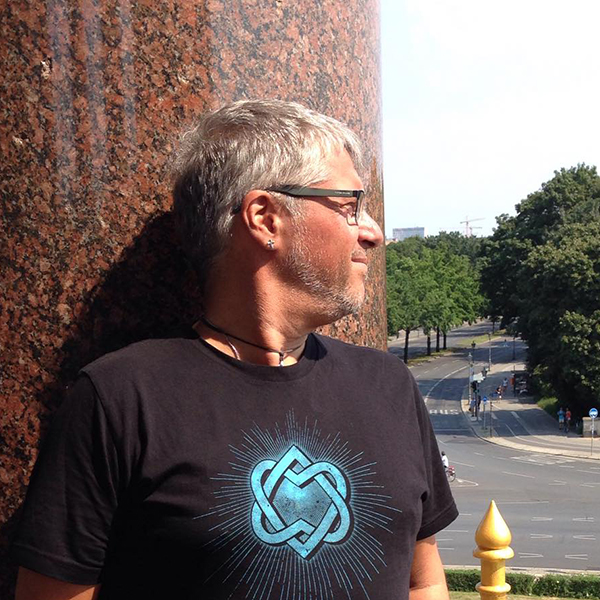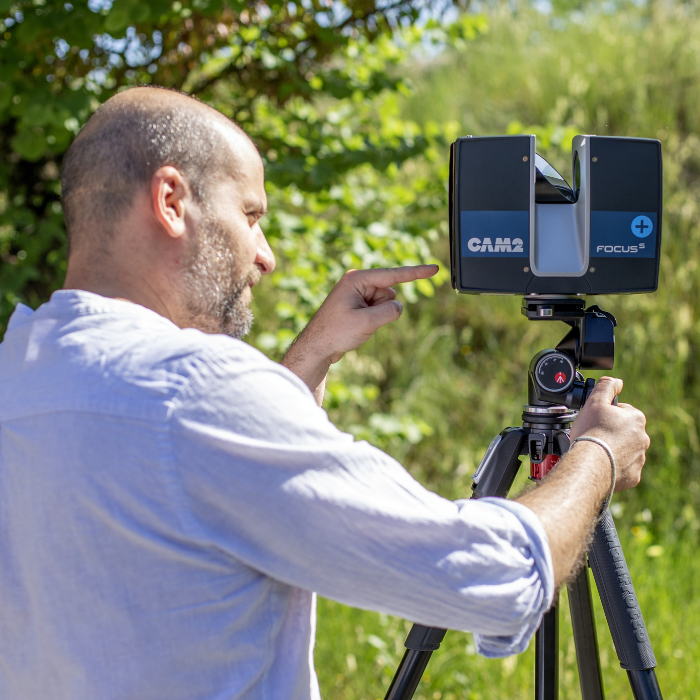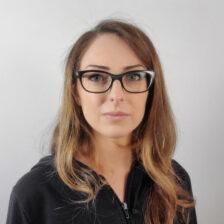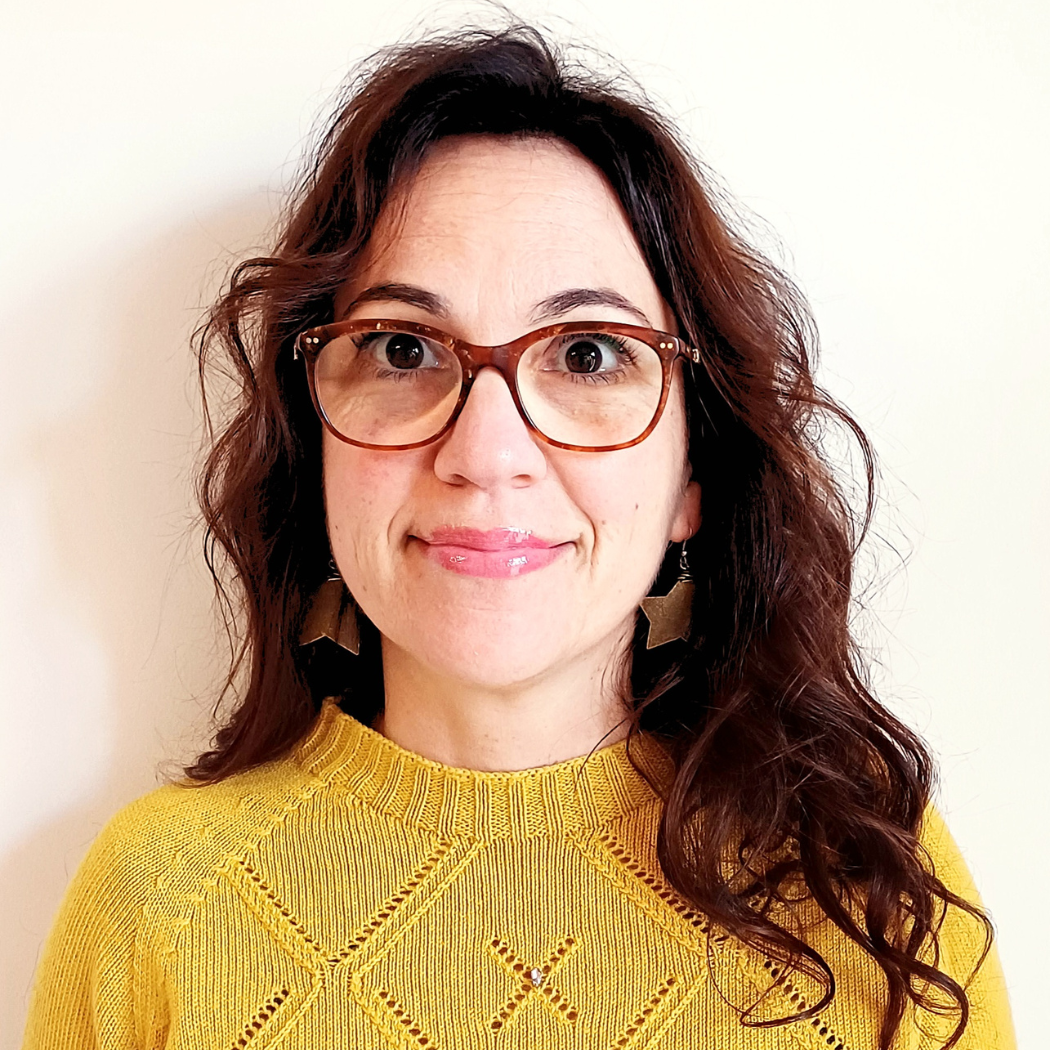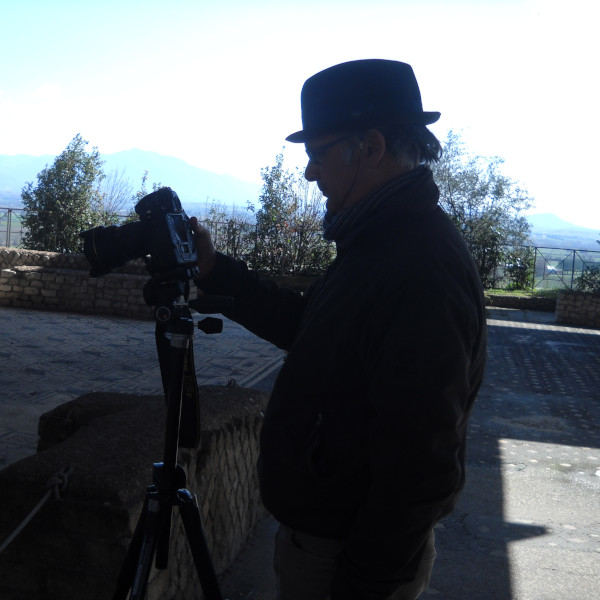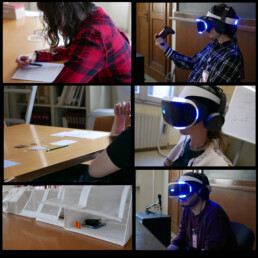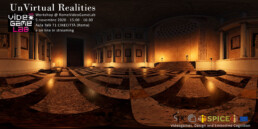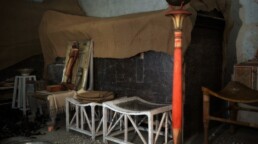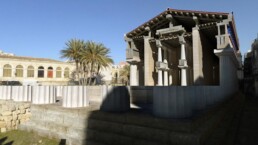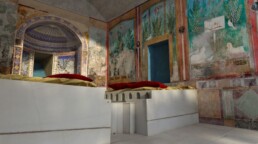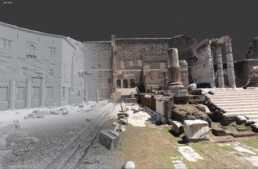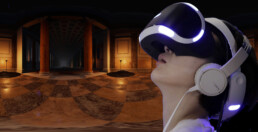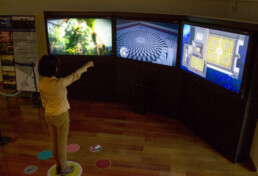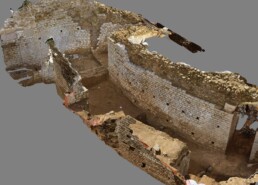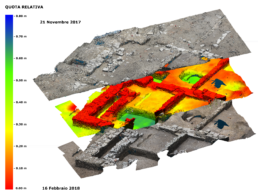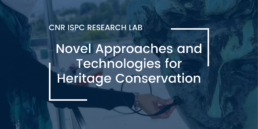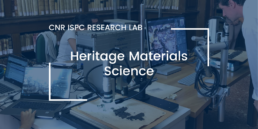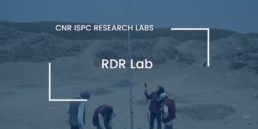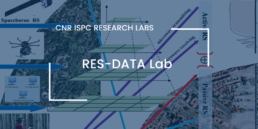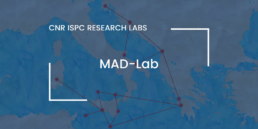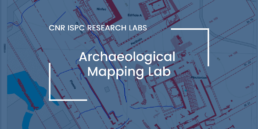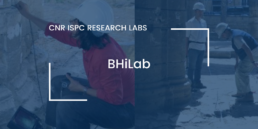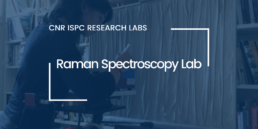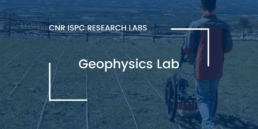Science, Art, Technology
DHiLab | Digital Heritage Innovation Lab
The DHiLab is a national and international reference point for digital survey, virtual museums, interactive media technologies, computer animation, digital storytelling, virtual/augmented reality and immersive; educational video games; 3D simulated environments, digital libraries, semantic models focused on the knowledge, conservation and promotion of Cultural Heritage.
It currently has offices in Catania, Florence, Lecce and Rome.
Our story
DHiLab is mainly focused on digital technologies applied to Cultural Heritage, merging together laboratories actively involved in such domain before the constitution of CNR ISPC: Virtual Heritage Lab (VHLab) of ITABC, Rome; Information Technology Lab (ITLab) of IBAM, Lecce; Catania; and Florence.
These laboratories have always been involved in the documentation, digital acquisition, 3D modelling, virtual reconstructions and promotion of Cultural Heritage. DHiLab inherits therefore human resources, competences, tools, design skills, instruments and collaboration networks; since 2020 it started its activities in synergy.
What we do
We design and develop applications and innovative tools/methods to support interactive media design, restoration, virtual reconstructions, semantic mapping, interactive visualisation, through an experimental approach toward new narrative forms and audiovisual languages. We also evaluate their impact on audiences, in terms of user experience (UX), educational, social and cognitive potential. We follow a philosophy that gives priority to accessibility, interoperability and re-usage of scientific data (data FAIRness).
Our experimental activities have directed us to progressively find a convergence among media (VR, videogame, cinema, theater, holographic projection, Mixed Reality and Hybrid Reality); likely, the integration of storytelling, immersion and interaction, with the aim of increase engagement and embodiment and strengthen users' knowledge, content acquisition and social reflection. Science, art and technology result, therefore, inextricably linked in our activities.
Cultural Heritage we focus on, include both tangible and intangible heritage, from landscapes to the archaeological sites, from the monuments, to the material artifacts, from cultural traditions to creative and communicative expressions.
We plan and manage dissemination and communication activities through temporary exhibitions, permanent installations in museums, workshops, conferences, webinars and other public events.
About us
Our research team is interdisciplinary and it involves: archaeologists, conservators, art historians, architects, engineers, computer scientists, designers, experts in communication sciences, accessibility and open data specialists, 3D modellers, computer graphics artists, writers, musicians, photographers and videomakers.
We operate in accordance with governmental and cultural institutions, at national and international level, from a design and development perspective.
How to contact us
dhilab@ispc.cnr.it
Our main research topics
- Integrated survey methodologies aimed at creating 3D models and 2D drawings of the Heritage;
- 3D reality-based modeling;
- 3D source-based reconstructions of Heritage in certain historical periods;
- Virtual restoration;
- Spherical photogrammetry, panoramas, 360 photo/video acquisitions;
- Photographic and video documentation also from Drone;
- 2D/ 3D GIS and reconstruction of the ancient landscape;
- 2D and 3D data and paradata mapping tools related to 3D models and virtual reconstructions (sources and interpretative processes);
- Methods for the optimization of 3D models aimed at VR or video production;
- Virtual reality environments (single/multi user);
- UX, UI and Interaction Design;
- UX evaluation;
- Game Design and interactive application prototyping;
- Software development and use of graphics engines for real time 3d applications (Unity 3D, Unreal, OpenSceneGraph, Blender engine);
- Holographic projections and holographic display cases for museums;
- Gesture-based interaction with motion capture sensors;
- Programming of sensors for museums and sites (Arduino and Raspberry PI, and others);
- Immersive virtual reality systems (Head Mounted Display);
- Virtual guides on cross-platform mobile devices;
- Cloud services for the automatic generation of 3D terrains from GIS data that can be navigated online;
- WebVR/WebXR applications for exploring landscapes and 3D models;
- Depth Panoramic Frame (DPF);
- Sound landscapes, also in Dolby Surround 5.1;
- Storytelling and scientific communication, with particular focus on the use of new digital languages and photorealistic 3D representation techniques;
- Definition of e-learning models and technologies for Cultural Heritage;
- Definition of software models and architectures for the interoperability of data between heterogeneous information systems;
- Analysis, description and formal representation of operational processes aimed at the knowledge, conservation and use of the Heritage;
- Big Data analysis and Machine Learning;
- Internet of Things (IoT) systems and applications;
- Study of models and technological solutions to support accessibility, interoperability and reuse of scientific data (data FAIRness).
Florence office
Equipment
- Photographic and video equipment;
- Close-range photogrammetry equipment;
- Photogrammetric processing software for digital images.
Staff Firenze
Lecce office
Equipment
- UAS Italdron Scrabble 4HSE with Panasonic GH4 4K stabilized camera with three-axis gimbal, system with double operators;
- Leica Geosystem P20 laser scanner;
- Calculation workstation;
- Photographic equipment.
Rome office
Equipment
- 1 DJI S1000 Drone with Gimbal;
- 1 Drone Dji Phantom 2;
- 1 Insta 360 Pro 2;
- 1 Canon Eos 6D camera;
- 1 Nikon D3S camera;
- 1 Nikon D800 camera;
- 1 Canon Xf-305 camcorder;
- Lenses: 1 Nikkor 2.8/35-70 mm; 1 Nikkor 2.8/12-24 mm, 1 Nikkor 2.8/105 mm micro; 1 Canon 1.8/35 mm; 1 Sigma 1.8/14 mm;
- 1 Manfrotto tripod with 3-way head;
- 2 Oculus Rift 2 kits;
- 1 Oculus Quest kit;
- Holographic showcase;
- Infrared sensors (Kinect, leap Motion, etc.).
Staff Roma
Projects and Research activities
- Brancacci Project. From the collaboration agreement of CNR ISPC, Florence Municipality and the Superintendence of Archaeology, Fine Arts and Landscape for the metropolitan city of Florence and the provinces of Pistoia and Prato, the Brancacci project takes shape for the protection, safeguarding and enhancement of the Masaccio, Masolino and Filippino Lippi's artworks at the Brancacci Chapel in Florence.
- EFFORT | Efficiency in preservation and enhancement of historic gardens. The interdisciplinary approach is the key to the project while addressing the conservation problems of vegetation and stone furnishings with a view to the management of its balance within the garden. The laboratory took care of the video making. Video
- EPISTEME | Esplorazioni e Percorsi Integrati tra Storia TEcnologia e MEmoria. The Lab is working on the design of interactive installations, as part of the Humanism and Science path.
- Reveal 2. Follow up of Reveal Realising Educational Virtual Environments and Augmented Locations (H2020 project). The case study, the video game “A Night in the Forum”for Playstation VR, is currently being evaluated. The follow up of the project plans to integrate elements from cognitive sciences in order to improve memorability (meaningfulness), development and reflection on abstract concepts, attention and focus, spatial perception.
- SPICE. Social cohesion, Participation, and Inclusion through Cultural Engagement (H2020 project).
- MUSEO TO MITREO - Multimedia setup (2 - "Distretto Tecnologico per le Nuove Tecnologie applicate ai Beni e alle Attività Culturali" project). The laboratory is involved in the creation of photorealistic models of the findings preserved in the Mitreo gallery and in the "Umberto Mastroianni" Civic Museum.
- La tomba della Montagnola Virtual Tour. A project of Comune di Sesto Fiorentino, Sesto Fiorentino Associazione Turistica Proloco, SABAP - Soprintendenza Archeologia Belle Arti e Paesaggio per la città metropolitana di Firenze e per le province di Pistoia e Prato. Realized by CNR ISTI and CNR ISPC. 3D Survey: Integrated Architectural Monitoring Systems made by SI∑MA with the contribution of Publiacqua S.p.A.
Lecce office
- HerMes | HERitage sMart social mEdia aSsistant (POR FESR Lazio 2014-2020). The project provides a series of advanced tools and services for the enhancement and use of the tangible and intangible Cultural Heritage of Lazio region, Italy. Hermes aims to connect the heterogeneous needs, needs, interests of the possible stakeholders by adopting an approach based on a bottom-up participation model and with the support of advanced IT technologies, such as Artificial Intelligence algorithms.
- IDEHA | Innovation for Data Elaboration in Heritage Areas (PON Ricerca e Innovazione 2014-2020).
- ALETIUM 2020 – Archaeological excavation campaign at the Messapian necropolis of Monte d'Elia in Alezio (Lecce), in collaboration with the Department of Cultural Heritage of the University of Salento, which holds the scientific responsibility of the excavation (directed by Prof. Giovanni Mastronuzzi). Video
- E-RIHS-PP | European Research Infrastructure for Heritage Science – Preparatory Phase. The Lecce office hosts a node of the DIGILAB platform of the E-RIHS. infrastructure.
- SSHOC– Social Sciences & Humanities Open Cloud. Task 5.7 Open Linked Data. Archaeology Case Study: 3D reconstruction of the Roman Theater of Catania with the application of modern methodologies of documentation of the reconstructive process.
- Parco Archeologico di Naxos. Realization of 8 videos promoted by the Archaeological Site of Naxos-Taormina in the occasion of the G7 summit held in Taormina on 26-27 May 2017 and reconstructive study on Naxos (Me), the first Greek colony in Sicily.
- DiCeT – PON Ricerca e Competitività 2007-2013.Realizations of 3 stereoscopic videos, for the LivingLAB of the Historical Museum of Lecce - MUST, showing the digital reconstructions of the Amphitheater, the Roman Theater and the Palmieri Hypogeum of Lecce.
- Progetto SMART CITIES – PON “Energia da Fonti Rinnovabili e ICT per la Sostenibilità Energetica”. 3D reconstruction of the Greek Theater of Syracuse, the Temple of Apollo, the temples of Piazza Duomo.
- MArTA racconta. Storie virtuali di tesori nascosti was born with the primary aim of making some underground funerary monuments of the ancient city 'accessible' and usable in the National Archaeological Museum of Taranto (MARTA), through a Virtual Reality installation. 3 monuments have been chosen: the Gemine Tombs in via Sardegna, the Hypogeum of the Festoons in via Crispi and the Hypogeum of the Gorgons in via Otranto (2014).
- Museo Egizio di Torino – Realization of 5 videos in Computer Graphic (The Tomb of Kha, The chapel of Maia, The tomb of Nefertari, The house of the Golden Bracelet and The house of Octavius Quartio) for the new museum set-up in occasion of the exhibition “Il Nilo a Pompei Visioni d'Egitto nel mondo romano" (2015).
- e-Archeo | Progettazione multimediale e servizi di ricerca finalizzati al progetto di valorizzazione e fruizione di 8 aree archeologiche del territorio nazionale (Sirmione Grotte di Catullo e villa di Desenzano, Marzabotto, Cerveteri, Alba Fucens, Velia, Sibari, Egnazia, Nora), attraverso l’utilizzo di soluzioni digitali filmiche, di realtà virtuale e realtà aumentata. Attività di coordinamento scientifico e tecnologico del progetto e della narrazione, in particolare, del sito di Cerveteri. Realizzato per ALES. S.p.A. e in collaborazione con altre Università e istituzioni del Mibact. Gli output sono rivolti sia ad un pubblico ampio che ad target più specialistico, realizzati all’insegna della filosofia degli Open Data e dei principi FAIR, e accessibili attraverso una piattaforma multicanale, durante la visita dei siti e in remoto (2020-in corso).
- ATON, an open-source framework for the creation of Web3D applications able to present and interact with online virtual scenes and objects about Cultural Heritage. The framework takes full advantage of web technologies and the latest standards to deliver interactive 3D applications through a normal browser, without requiring any installation from the end user. The system is scalable (from small single-board PCs to large infrastructures) and provides adaptive and advanced use for different devices (mobile, multi-touch, desktop / kiosk PC and immersive VR). (2016-ongoing).
- San Marino.Survey campaigns with aerial and terrestrial photogrammetry, laser scanning for the mapping of the walls and towers of San Marino in order to interpret their construction phases (2016 – ongoing).
- Villa romana di Aiano. Photogrammetric survey of the Roman Villa of Aiano (San Gimignano, SI) and 3D reconstruction of the so-called trilobate room located in the villa. Agreement of understanding with UCLouvain (2018-2019).
- Innova Patrimonio. POR FESR Lazio 2014-2020 Beni Culturali e Turismo. An innovative narrative model of the territory and its surroundings, in particular of the ancient villages, to be conveyed through dramaturgical representations of stories, characters, ways of life, testimonies of the inhabitants, videomapping, accessible from advanced technological platforms (2019-2021). Video
- intARSi. Executive multimedia projects of n. 12 interventions for the Museum of Civilizations of Rome, the Archaeological Park of Ostia Antica and the Toy Museum of Zagarolo (2018-2020).
- REVEAL | Realising Education through Virtual Environments and Augmented Location (H2020 project). Study, development and experimentation of videogame as a tool for disseminating knowledge of the European historical-archaeological heritage. A Night in the Forum , an educational videogame for Playstation VR released in 2019 on the Playstation Store (2017-2019).
- Arkaevision, Integrated system able to offer different interactive ways of experiencing Cultural Heritage through 3D virtual representation of monuments, works of art and ancient artifacts, based on immersive Virtual Reality and Mixed Reality (PON 2017-2018).
- CEMEC |Connecting Early Medieval European Collections (Creative Europe – Culture, Cooperation project). Digitization and enhancement of museum artefacts through innovative holographic and audiovisual showcases, presented as part of a traveling exhibition at partner European museums (2015-2019). Video 1 – Video 2 – Video 3
- V-Must.net | Network of Excellence on Virtual Museums (FP7). Study of the state of the art and future developments of Virtual Museums domain, accompanied by concrete laboratory activities and international exhibitions (2011-2015).
Rome office
For further information on ISPC research activities click the button.
Main collaborations
Public Institutions
- ALES-MIBACT
- Comune di Firenze
- Comune di Lecce
Comune di Roma - ICOM
- Istituti Culturali di San Marino
- Istituto ITS EAT, Grosseto
- Liceo Scientifico Agnoletti, Firenze
- Parco Archeologico di Naxos – Taormina
- Parco Archeologico di Ostia Antica
- Parco Archeologico di Paestum
- Parco Archeologico di Pompei
- Soprintendenza ai Beni Archeologici e Paesaggistici delle province di Firenze, Prato e Pistoia
- Soprintendenza Archeologica belle arti e paesaggio per le provincie di Brindisi, Lecce e Taranto
- Soprintendenza Capitolina Direzione Generale Musei
Universities
- Libera Università di Bolzano
- Politecnico di Torino
- Sapienza University of Rome
- Scuola Sant’Anna di Pisa
- Università Cattolica di Louvain (Belgio)
- Università del Salento
- Università della Tuscia
- Università di Bologna
- Università di Firenze
- Università di Lund (Svezia)
- Università di Padova
- Università di Roma Tor Vergata
- University of Siena
- University Sheffield Hallam (UK)
European network of Cultural and Technological Centres
- 3D Icons
- Ariadne
- CEMEC
- Etruscanning
- Reveal
- V-Must
Museums
- Galleria degli Uffizi, Firenze
- Mercati di Traiano-Museo dei Fori Imperiali, Roma
- Museo della Preistoria di Nardò, Lecce
- Museo delle Civiltà (MUCIV), Roma
- Museo Egizio, Torino
- Museo Nazionale Archeologico di Taranto (MARTA)
- Museo Nazionale Etrusco di Villa Giulia, Roma
- Museo Nazionale Romano-Terme di Diocleziano, Roma
- Musei Vaticani, Roma
- Polo Museale della Toscana (Giardino della Villa medicea di Castello – Museo e Galleria Mozzi Bardini – Museo Richard-Ginori della manifattura di Doccia – Villa medicea della Petraia, Firenze)
Private Companies
- 3D Flow
- adArte Srl
- AeffeGroup Srl
- EDAServizi CSC
- Enel Sole S.r.l.
- Fondazione Cassa di Risparmio di Firenze
- Istituto Luce – Cinecittà
- Sistemi Integrati di Monitoraggio Architettonico: SI∑MA STUDIO FLU Srl
- Società Geografica Italiana ANAS
- Teatro Potlach
- The Plus Planet CSC
- VideoGameLab
Main publications
E. Pietroni, D. Ferdani, Virtual Restoration and Virtual reconstruction in Cultural Heritage: terminology, methodologies, visual representation techniques and cognitive models. In Journal Information, 2021,12, ISSN 2078-2489, MDPI, Special Issue on “Virtual Reality Technologies and Applications for Cultural Heritage”. Doi: 10.3390/info12040167
G. Leucci, L. De Giorgi, F. Giuri, I. Ferrari, G. Scardozzi, Integrated geoscientific surveys at the Church of Santa Maria della Lizza (Alezio-Italy), Sensors 2021, 21, 2205. ISSN: 1424-8220.
D. Ferdani, B. Fanini, M.C. Piccioli, F. Carboni, P. Vigliarolo, 3D reconstruction and validation of historical background for immersive VR applications and games: the case study of the Forum of Augustus in Rome. In Journal of Cultural Heritage, vol. 43, p. 129-143, 2020, ISSN: 1296-2074.
E. Demetrescu, E. d’Annibale, D.Ferdani, B. Fanini, Digital replica of cultural landscapes: an experimental reality-based workflow to create realistic, interactive open world experiences. In Journal of Cultural Heritage, vol. 41, p. 125-141, 2020, ISSN: 1296-2074.
B. Fanini, L. Cinque, Encoding, Exchange and Manipulation of Captured Immersive VR Sessions for Learning Environments: the PRISMIN Framework. In Applied Sciences 2020, 10, 2026. Special Issue “Emerging Artificial Intelligence (AI) Technologies for Learning”.
S. Pescarin (ed.), Videogames, ricerca, patrimonio culturale. Educazione al patrimonio culturale e formazione dei saperi. Milano, FrancoAngeli, 2020, ISBN: 9788835103004.
S. Bracci, D. Magrini, R. Manganelli Del Fà, O.A. Cuzman, B. Mazzei. Brightly Colored to Stay in the Dark. Revealing of the Polychromy of the Lot Sarcophagus in the Catacomb of San Sebastiano in Rome. In Heritage 2020, 3, 858-874.
S. Pescarin, I. Cerato, B. Fanini, D. Ferdani, A. Palombini, L. Rescic; L. Ungaro, P. Vigliarolo, A. Hamilton, I. Mesche, K. Mifsud. Una notte nel foro: un videogioco ambientato in un sito archeologico. In Videogames, Ricerca, Patrimonio Culturale, Franco Angeli, Milano 2020
G. Poggesi, A. Arrighetti, G. Minutoli, G. Pancani, R. Manganelli Del Fà, M.Callieri, Tumulo etrusco della Montagnola: un viaggio virtuale All’Insegna del Giglio, Borgo San Lorenzo (Italia). In Tutela & Restauro 2016-2019. Notiziario della Soprintendenza archeologia belle arti e paesaggio per la città metropolitana di Firenze e le province di Pistoia e Prato, 2020.
B. Fanini, S. Pescarin, A. Palombini, A cloud-based architecture for processing and dissemination of 3D landscapes online. In Digital Applications in Archaeology and Cultural Heritage, 14, 2019.
E. Pietroni, Experience design, virtual reality and media hybridization for the digital communication inside museums. In Journal Applied System Innovation – ASI (ISSN 2571-5577), MDPI, Special Issue entitled “Virtual Reality in Product Design”, 2019. Doi: 10.3390/asi2040035.
E.Pietroni, D. Ferdani, M. Forlani, A. Pagano, C. Rufa, Bringing the Illusion of Reality Inside Museums—A Methodological Proposal for an Advanced Museology Using Holographic Showcases. In Informatics 2019, Volume 6, Issue 1, 2019, MDPI Academic Open Access Publishing CC BY, Doi: 10.3390/informatics6010002.
G. Leucci, L. De Giorgi, I. Ditaranto, F. Giuri, I. Ferrari, G. Scardozzi, New Data on the Messapian Necropolis of Monte D’Elia in Alezio (Apulia, Italy) from Topographical and Geophysical Surveys, Sensors 2019, 19, 3494; pp. 1-26, ISSN 1424-8220. Doi: 10.3390/s19163494.
F. Gabellone, I. Ferrari, F. Giuri, The Greek-Roman theater of Taormina: towards a reconstruction proposal. In Proceedings of the 22th International Congress “Cultural Heritage and New Technologies”, CHNT 22, 2019, November 8-10, 2017, Vienna City Hall, pp. 1-9.
A. Pagano, A. Palombini, G. Bozzelli, M. De Nino, I. Cerato, S. Ricciardi, ArkaeVision VR game: user experience research between Real and Virtual Paestum, “Applied Sciences”, 10(9), 3182, 2020, Special Issue entitled “Virtual Reality and Its Application in Cultural Heritage”, ISSN 2076-3417, IF 2.217.
